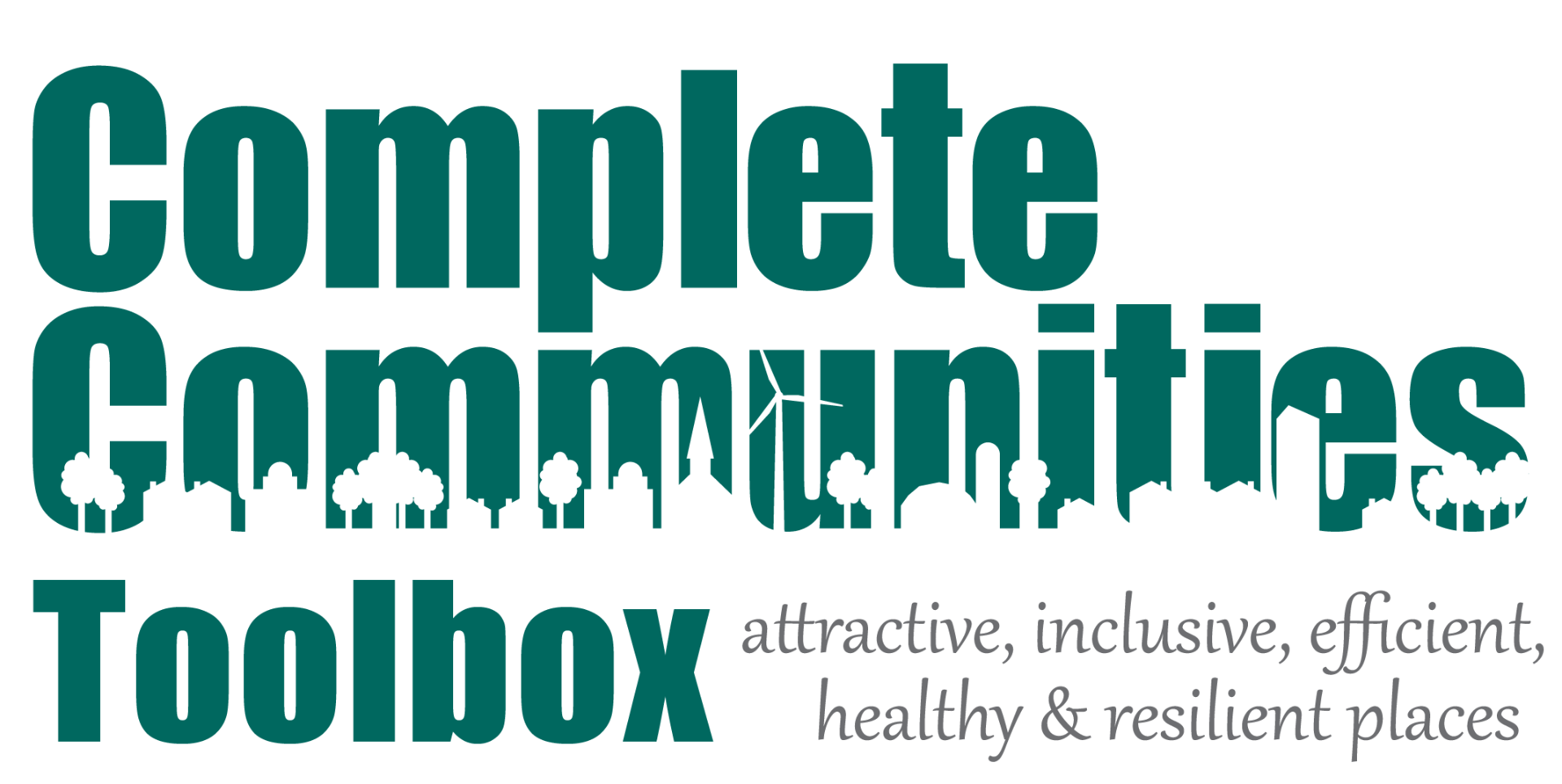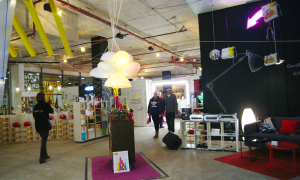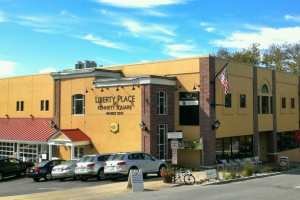Local governments should engage stakeholders to establish a clear vision for infill, redevelopment, and revitalization in areas targeted for growth and reinvestment. This section of the Delaware Complete Communities Planning Toolbox describes infill and redevelopment strategies, tools, and programs that local governments may wish to consider as an alternative to sprawling and unsustainable land use and development patterns.
Topics include:
- What are Infill and Redevelopment?
- Adaptive Reuse of Underutilized Buildings and Sites
- Types of Infill
- Barriers to Infill Development
- Incentives and State Programs that Support Infill Development
What are Infill and Redevelopment?
There are various definitions of infill and redevelopment. The American Planning Association describes infill development as redevelopment that, “optimize[s] prior infrastructure investments and consumes less land that is otherwise available…” Infill development and redevelopment can result in:
- Efficient utilization of land resources
- More compact patterns of land use and development
- Reinvestment in areas that are targeted for growth and have existing infrastructure
- More efficient delivery of quality public services
The Maryland Sustainable Growth Commission offers three definitions of infill, redevelopment, and revitalization. The following is an adaptation of these definitions.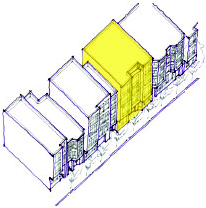
- Infill refers to the development of vacant parcels within previously built areas. These areas are already served by public infrastructure, such as transportation, water, wastewater, and other utilities.
- Redevelopment describes converting an existing built property into another use. Ideally, redevelopment aims for better use of the property that provides an economic return to the community. For example, a vacant property may be converted to a mixed-use development that combines residential and commercial uses.
- Revitalization means instilling new life and vitality into a community through activities such as infill and redevelopment. Revitalization activities may include reusing or renovating buildings, improving building façades, streetscaping to beautify an area, and/or conducting incentive-based or preservation-based economic development tools to leverage local assets.
Infill development can occur on brownfield sites with potential environmental issues like a small isolated parcel with former gas station, on the site of a large, abandoned manufacturing facility, or on a declining commercial-strip mall location, or “greyfield.” This development strategy aims to fill in “gaps” in communities, playing a key role in efficient land-use, community revitalization, and economic development. Infill utilizes existing infrastructure, directs reinvestment to high-priority growth areas, and has the potential to generate jobs. Infill development also provides a smart alternative to sprawling development in undeveloped, greenfield areas that lack infrastructure are not designated for growth.
Adaptive Reuse of Underutilized Buildings and Sites
A briefing paper from ICMA’s Center for Sustainable Communities defines adaptive reuse as the “modification of a pre-existing structure or previously developed property for a new purpose, often different from its original one.” Many of these underutilized buildings and sites are remnants of old industrial sites, warehouses, public schools, retail establishments, rail stations, gas stations, mills, barns or agricultural buildings that can be unique settings for infill and redevelopment. With community visioning and support, adaptive reuse can transform these relics of the past into vibrant public spaces, community or recreation centers, art or cultural venues, indoor vendor markets, business incubators, and/or mixed-use development. Urbanful, an online destination and project of Smart Growth America, recently featured seven examples of obscure places that were transformed into livable and usable destinations.
Adaptive reuse of vacant sites and buildings has several community benefits. It can save money on building materials and new construction. Because vacant properties and buildings are already served by existing water, waste water, utilities, and transportation systems, costly expansion or installation of new infrastructure in not needed. Adaptive reuse of vacant sites and buildings located in walkable, compact areas, downtown development districts, or historic areas can help to revitalize and area and spur economic development. The Historic Preservation section of the Toolbox states that preservation and adaptive reuse of historic structures add character and charm, enhance neighborhood pride, and fosters a strong cultural identity among generational residents of a community.
In addition, historic adaptive reuse projects complement place-based economic development strategies, encourage economic growth, an conserves natural resources. Structures and sites that are located in brownfield or greyfield areas may be contaminated and need remediation. While this may increase upfront costs of redevelopment and pose other challenges, there are long-term community payoffs. Benefits include a possible growth in the local tax base, more jobs, a cleaner environment, and support for community development and revitalization.
Types of Infill Development
Residential Infill Development is the most prevalent type of infill development. Residential infill development is an economically feasible way to decrease vehicular travel, promote non-motorized travel by creating walkable/bikable places, and support transit use. It enhances the quality of life of a community by introducing new housing types, enhancing community character, providing more efficient land use, and preserving local character when historic preservation strategies are used. When infill development incorporates a mix of residential and commercial uses, it can enhance a sense of place and increase property values.
Commercial Infill Development typically occurs on “greyfield sites.” These are vacant, underutilized, or underinvested properties, such as blighted strip malls that no longer attract enough 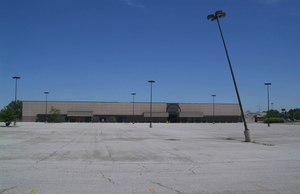 tenants or investment. The Congress for New Urbanism sees these obsolete shopping malls as prime spots for transit-oriented, mixed-use development. Although these vacant parcels demonstrate that the commercial value has waned, the properties may be better suited for mixed-use development that incorporates a blend of housing, retail, office, services, and public space. This type of infill development can offer needed diversity and interdependent land uses that may reduce automobile travel demands when compared to single purpose, greenfield developments. Revitalization of these sites also may prevent the land value of greyfield strip malls from dipping below the cost of building demolition, which would have disastrous economic and community impacts. Redevelopment of these sites can strengthen a community’s tax base, increase job opportunities, and contribute to more efficient land-use patterns.
tenants or investment. The Congress for New Urbanism sees these obsolete shopping malls as prime spots for transit-oriented, mixed-use development. Although these vacant parcels demonstrate that the commercial value has waned, the properties may be better suited for mixed-use development that incorporates a blend of housing, retail, office, services, and public space. This type of infill development can offer needed diversity and interdependent land uses that may reduce automobile travel demands when compared to single purpose, greenfield developments. Revitalization of these sites also may prevent the land value of greyfield strip malls from dipping below the cost of building demolition, which would have disastrous economic and community impacts. Redevelopment of these sites can strengthen a community’s tax base, increase job opportunities, and contribute to more efficient land-use patterns.
Brownfield Infill Development occurs on former industrial sites that have been abandoned, idled, or underutilized. Expansion or redevelopment of these sites can be complicated by a real or perceived threat of environmental contamination. Examples of these sites include former warehouses, gas stations, landfills, manufacturing plants, or factories. Benefits to redeveloping brownfield sites include replacing blighted landscapes with more attractive development; increasing economic and social well-being by creating new housing, jobs, public space, and sources of tax revenue; and remediating contaminated properties to protect the health and safety of the environment and the public.
Mixed-Use Infill Development is development that combines residential, commercial, cultural, institutional, and/or industrial uses. This practice supports tenants of Smart Growth and elements of the Delaware Complete Communities planning framework. Efficient land use is achieved when places to live are located in close proximity to places to work, conduct business, shop, dine, and socialize. Research shows that centrally located mixed-use development, can enhance walkability and bikeability, boost transit ridership in areas served by transit, and reduce driving if there are nearby businesses that support daily living needs. In addition, mixed-use that provides greater housing variety and density can support affordable housing by lowering transportation costs. More retail businesses are opting for this type of development because it offers a strong, consistent customer base. Mixed-use infill development, in some instances, may require revisions to zoning codes and restructuring of parking regulations to accommodate both residential and commercial uses.
Barriers to Infill Development
Physical Barriers
Environmental issues such as hazardous contamination in brownfield sites can be a major barrier to infill development. Many of these contaminated sites are vacant because of their higher costs of infill development, such as liability issues and remediation expenses. Additionally, increased density as a result of infill development tends to cause more traffic and noise which can be perceived as undesirable by community members and developers. Lastly, existing infrastructure may be inadequate, deteriorating, or lacking capacity for many infill development projects that require higher levels of service.
Political/Community Barriers
Lack of strong political and/or community leadership can unintentionally spread anti-development sentiments in the community. If developers perceive a lack of political will for infill  development, they may be more likely to develop elsewhere. Vacant or deteriorated buildings often attract criminal activity and can be perceived by developers as unsafe places to locate a business. Also, not-in-my-backyard (NIMBY) attitudes of community members can block infill development. Neighbors may perceive that infill development with a higher density may lead to more noise, traffic, pollution, and safety issues in their community.
development, they may be more likely to develop elsewhere. Vacant or deteriorated buildings often attract criminal activity and can be perceived by developers as unsafe places to locate a business. Also, not-in-my-backyard (NIMBY) attitudes of community members can block infill development. Neighbors may perceive that infill development with a higher density may lead to more noise, traffic, pollution, and safety issues in their community.
Regulatory Barriers
Traditional, inflexible zoning codes can restrict infill or redevelopment by imposing density and building height limits. Zoning codes that result in a strict separation of land uses can limit innovative forms of development and prevent mixed-use development. Parking regulations that require a certain amount of spaces per square footage of development also may prohibit or limit infill development. In addition, lengthy, costly, and unpredictable land use development approval and permitting processes can greatly deter infill development and redevelopment.
Economic Barriers
Infill development can be extremely costly for developers. First, land acquisition costs tend to be higher for infill sites. Also, construction costs tend to be higher for infill development because of possible costs that a developer may incur for rehabilitation or brownfield remediation. As previously mentioned, time-consuming land use development approval and permitting processes can also be costly. In the development world, time is money. Permits and approvals take longer. Attending meetings and hearings, preparing applications with documentation, and submitting and/or resubmitting permits can cost both time and money. Unwieldy processes can present obstacles to developers who are unable to take financial risks and would rather devote attention to sure-bet projects that can become operational more quickly and easily. For smaller areas that are not slated for local or state government capital improvement plans, there could be a lack of funding for infrastructure maintenance and upgrades often needed to support more dense infill development. As the Environmental Protection Agency points out in “Smart Growth and Economic Success: Investing in Infill Development”, “another challenge of financing infill development is that financial models used by banks can act as a barrier to securing capital investment.”
Incentives and State Programs that Support Infill Development
Increasing Demand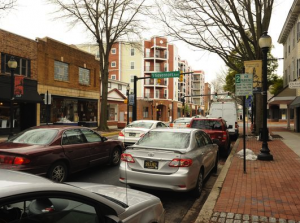
A Smart Growth publication by the Environmental Protection Agency (EPA) states that there is increasing demand for infill development. There are many demographic shifts affecting the housing market: baby boomers are aging, millennials are forming new households, and single-person households are growing. Baby boomers are becoming empty-nesters and retirees and desire the connectivity that urban settings provide. Data in the EPA resource indicates that two-thirds of millennials want to live in walkable communities where they can utilize public transit instead of driving automobiles. Single-person households, which comprise the second most common household type, desire the connectivity and type of pedestrian- and transit-oriented amenities that compact infill development can provide.
Profitability for Developers
Infill development occurs on sites where there is existing infrastructure; thus, developers may not be subject to impact fees or incur additional costs of new infrastructure for these projects. One study conducted by the City of Sacramento, California found that impact fees for infrastructure on greenfield sites were 10 times as high as the impacts fees for an infill site. Also, when infill development is transit-oriented, developers may save money on capital costs for parking. Despite higher capital costs required for infill development, developers may be able to command higher rent or sales prices to earn a profit. Since the recession, the value of suburban office space is plateauing while the value of office space in the urban core has increased. Infill development in compact, urban cores is correlated with better real estate performance and higher property values due to the increased walkability and access to transit, according to the EPA publication.
Local Government Incentives
Delaware local governments are encouraged to provide incentives for redevelopment and infill development areas primed for development. Creating flexible zoning, site, and building regulations can promote infill development. Local governments may wish to consider revising regulations and zoning ordinances to allow for mixed-use development, revise density limits, allow height and density bonuses, and reduced parking ratios in areas served by public transportation.
Brownfield Assistance Program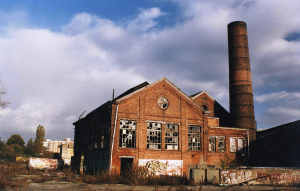
The Brownfield Assistance Program, funded through the Delaware Strategic Fund, provides matching grants to owners and developers to encourage the redevelopment of environmentally distressed sites within the state. This funding alleviates concerns over liability and cleanup costs that have previously hindered development on these sites. The program is administered collaboratively by the Department of Natural Resources and Environmental Control (DNREC) the Division of Small Business and offers 50% of the costs (up to $100,000) associated with the investigation and remediation of the site. To be eligible, sites must obtain Brownfield Certification through DNREC.
Delaware Brownfields Program
The Delaware Hazardous Substance Cleanup Act (HSCA) was signed into law in 2004. The Act created the Brownfields Development Program, which is administered by Delaware Natural Resources and Environmental Control’s (DNREC) Division of Waste and Hazardous Substances. The program encourages the cleanup and redevelopment of vacant, abandoned, or underutilized properties which may be contaminated. The program offers technical and financial assistance to help investigate, remediate, and redevelop brownfield sites. This enables brownfield sites to be returned to productive use and economically revitalized. This Brownfields Program has been recognized for its streamlined and expedited cleanup process, community involvement and planning, increased availability of financial assistance, and formation of valued partnerships throughout Delaware.
The Brownfields Development Program provides grants, which are funded by the HSCA. The grants are available to developers to help pay for the cleanup of contaminated site, and are distributed 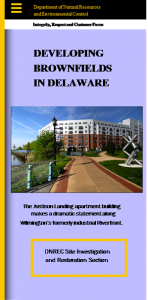 on a first-come, first-served basis. An applicant seeking certification of a brownfield site and grant funding must complete an application for brownfield certification.
on a first-come, first-served basis. An applicant seeking certification of a brownfield site and grant funding must complete an application for brownfield certification.
The HSCA also provides and has established procedures governing loans for hazardous substance cleanup. Nonprofit organizations, businesses, brownfield developers, and/or other potentially responsible parties may apply for a low-interest loan to be used for investigating and remediating a hazardous substance release at a site.
The Delaware Brownfield Marketplace features a database of all market-ready Brownfield sites in the state. Prospective developers can search a map to view all remediated brownfield sites in a particular county. As of September 2014, according to DNREC, there are 212 Certified Brownfield Sites with over 630 abandoned or underutilized Brownfield sites statewide. DNREC has produced a “Developing Brownfields in Delaware” brochure, which describes the need and benefits to developing brownfield sites and the dynamic Brownfield Program in the state. The brochure also highlights that there are over 800 potential brownfield sites in the state, with about 60-75% of them in urban areas.
Delaware’s world-class Brownfields Program is described in Brownfields video developed by DNREC’s Site Investigation and Restoration Section and featured on International City/County Manager Association (ICMA) TV. explains DNREC’s Brownfield Development Program. It emphasizes its success and potential to remediate contaminated vacant sites for redevelopment.
Delaware Downtown District Program
Downtown Development Districts, authorized by Senate Bill 191 on June 5, 2014, establish economic development incentives that promote revitalization of Delaware’s downtowns. It provides Downtown Development District (DDD) Grants to investors (both non-profit and for-profit) who make qualified real estate improvements in a designated District area. Investors within designated DDD will receive a state grant to offset 20 percent of “hard” construction costs, such as exterior, interior, and structural improvements. Local governments may apply for a DDD through the Office of State Planning Coordination during an open-enrollment period. To qualify, a local government must demonstrate need for the District designation, prepare and submit a District Plan, and offer local incentives for downtown investment.
Delaware Historic Preservation Tax Credit Program
The Delaware State Historic Preservation Office (SHPO) offers many resources to individuals and communities that seek to practice historic preservation in areas eyed infill development or redevelopment. Local governments are encouraged to pursue Certified Local Government (CLG) status to become eligible apply for grants to pursue various historic preservation-related projects and programs. In addition, Delaware’s Historic Preservation Tax Credit Program provides state tax credits that help offset the cost of preservation for homes and historic places listed on the National Register of Historic Places. In addition, the National Park Service administers the federal historic preservation tax credit program. It provides a brochure, which explains how federal tax credits are administered and have worked to leverage nearly $4 billion annually in private investment for the rehabilitation of historic buildings across the country.
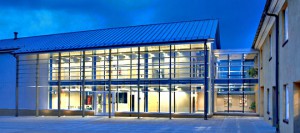
Blue Ball Barn, Alapocas Run State Park

